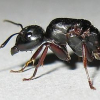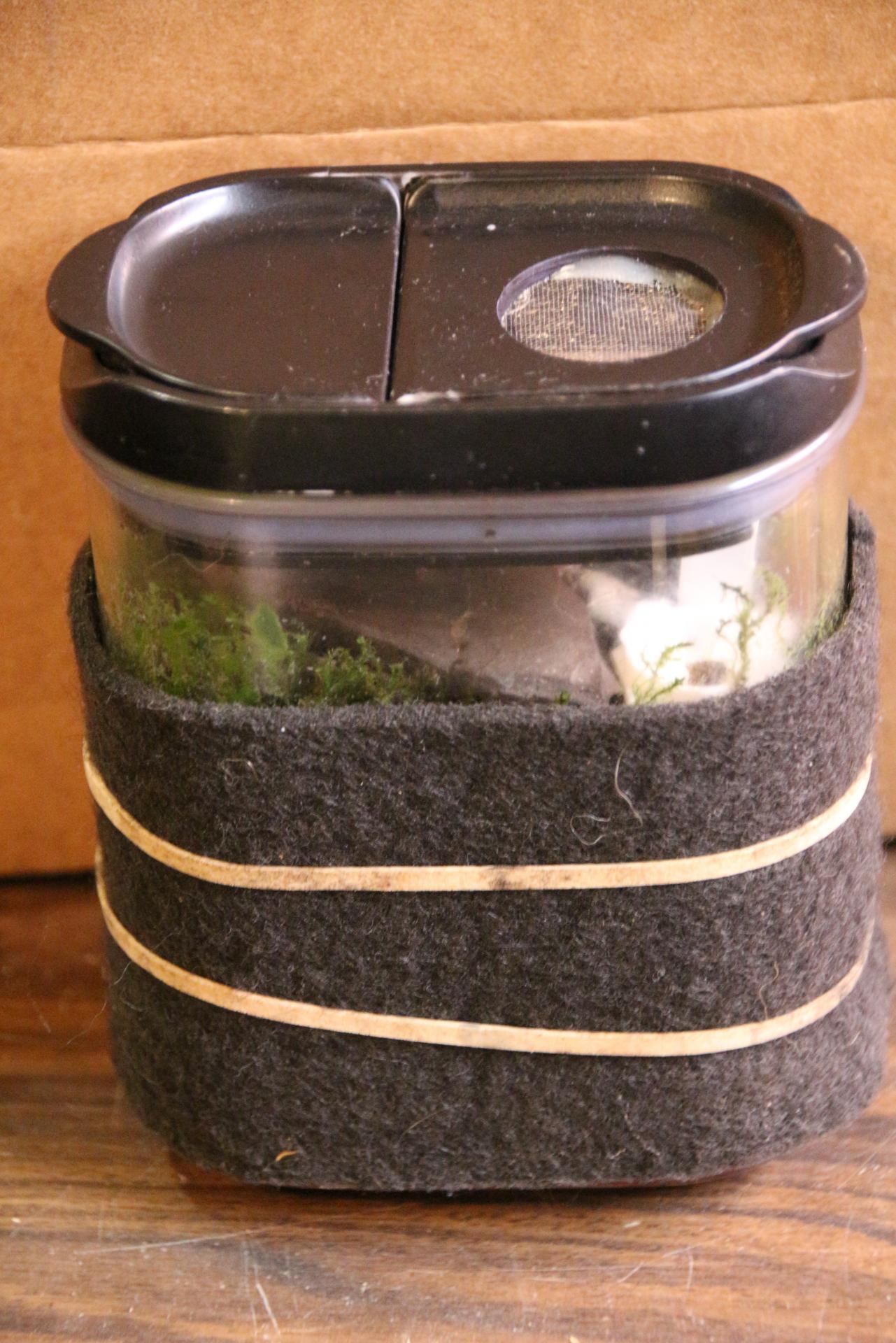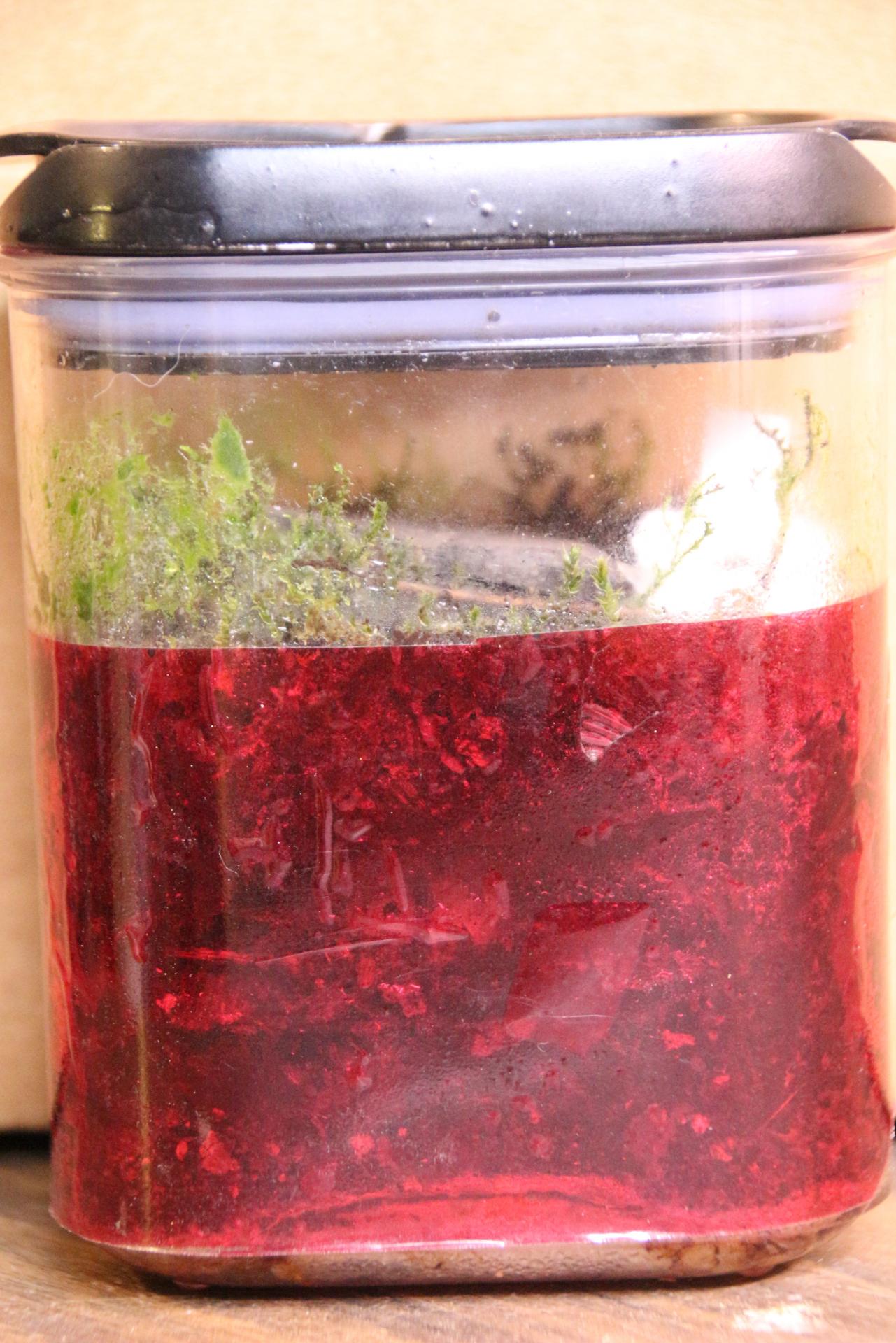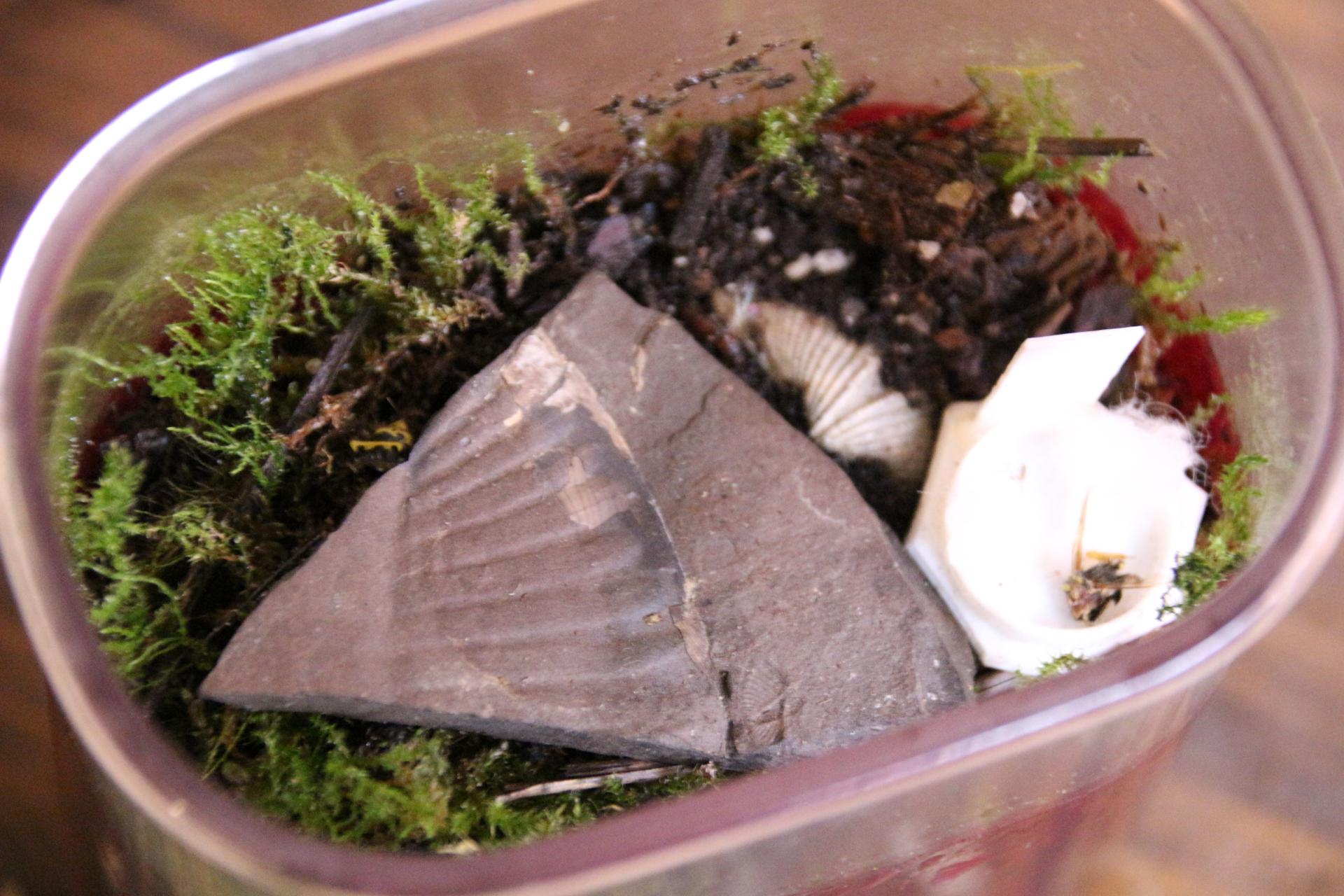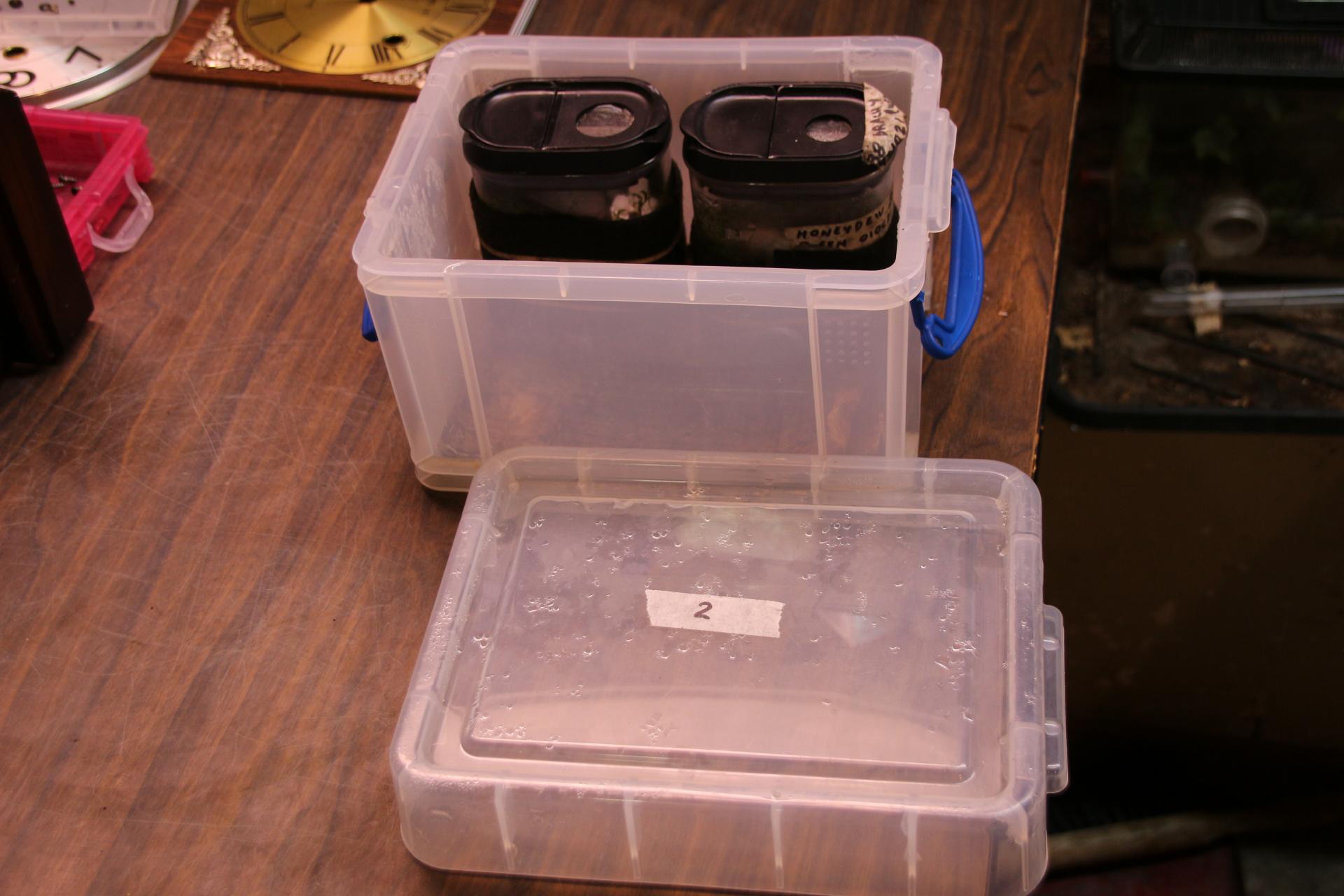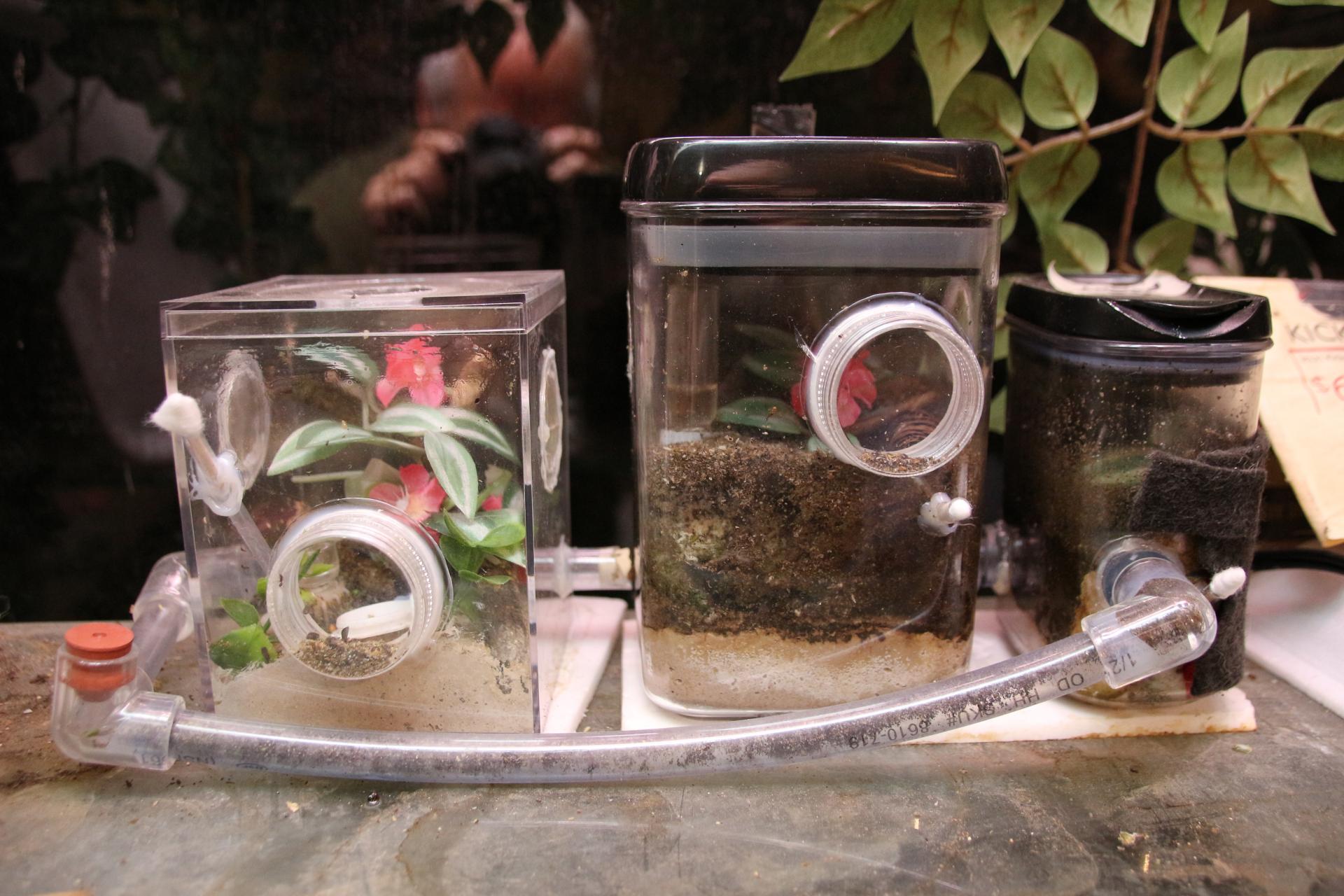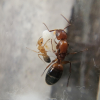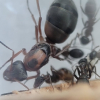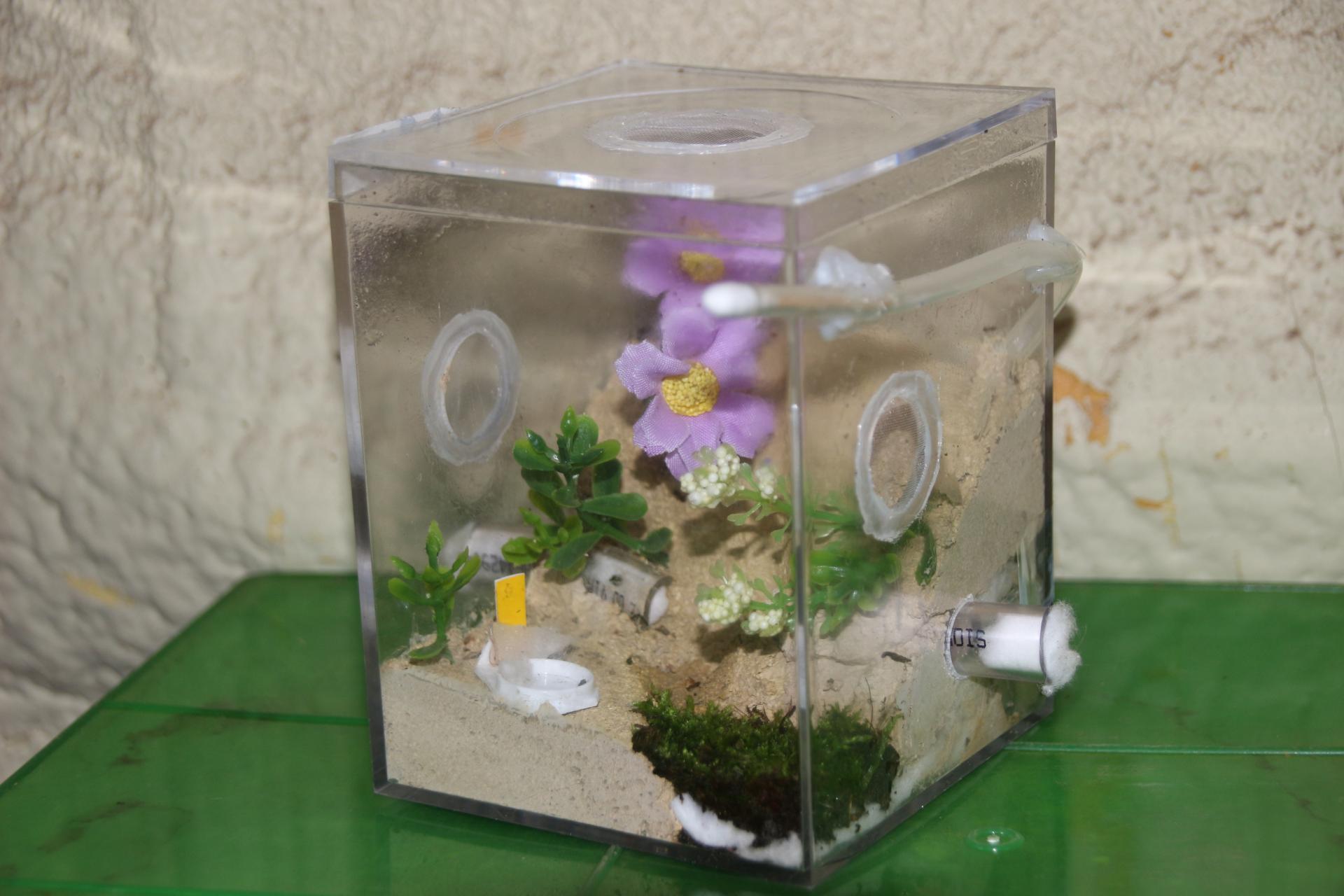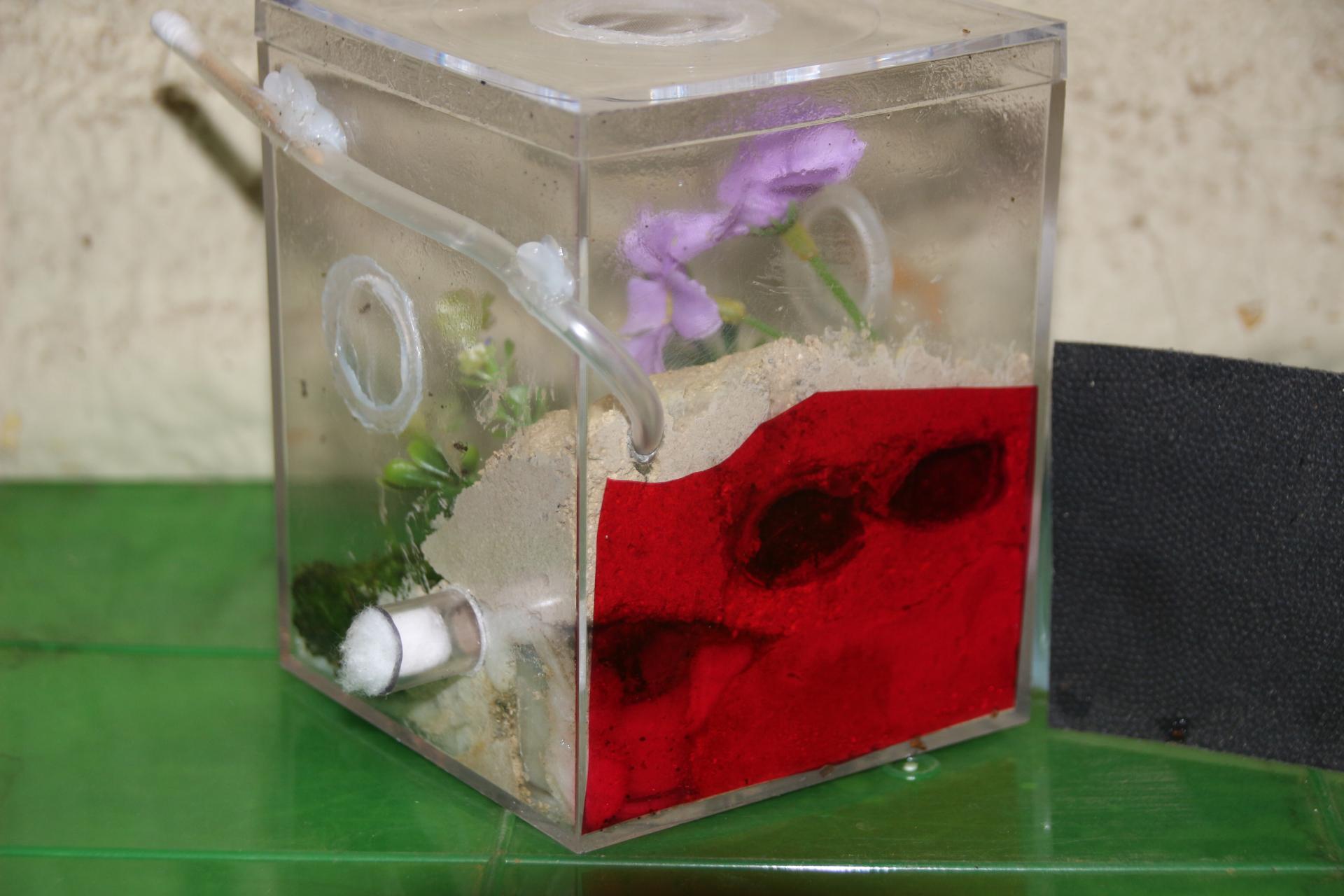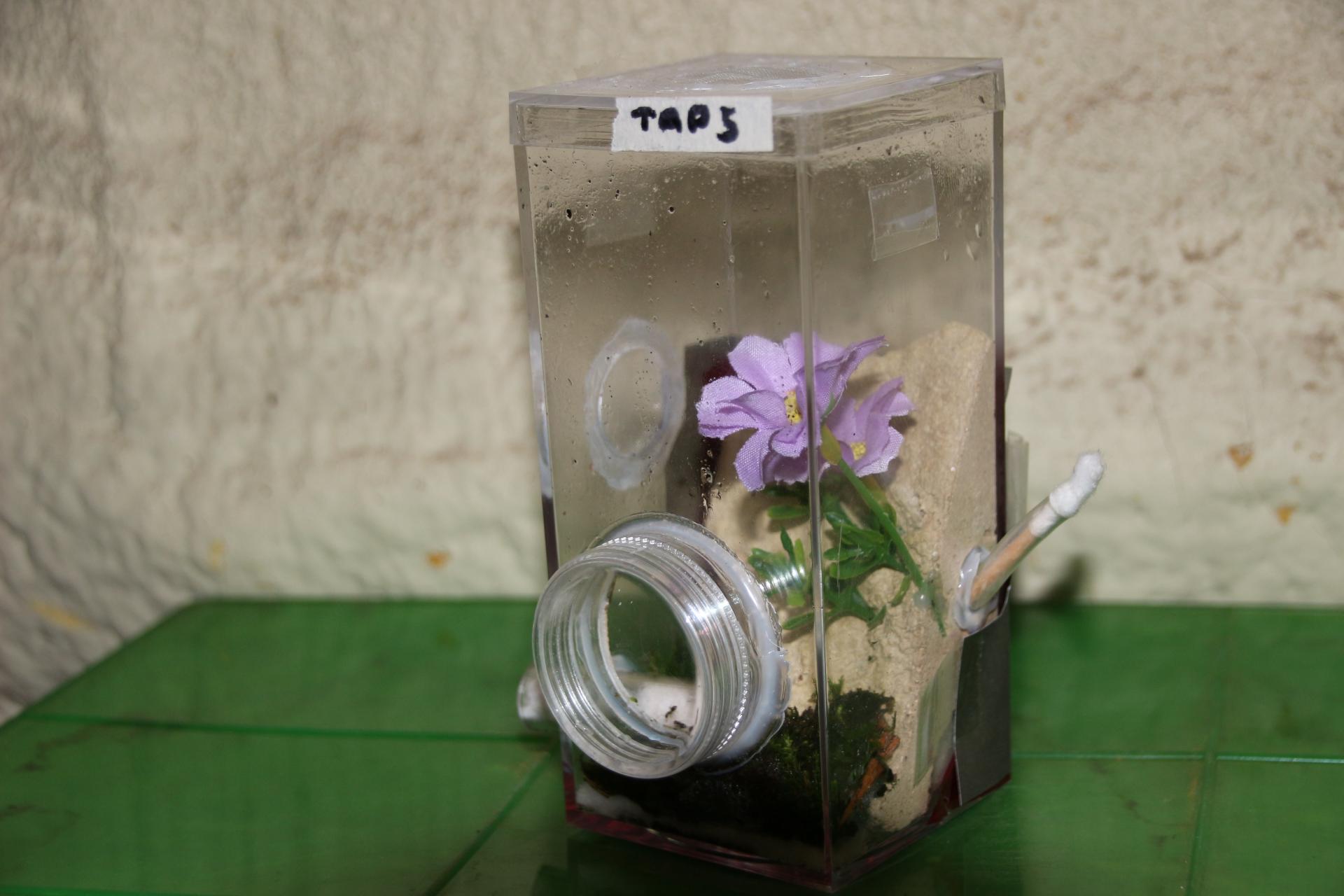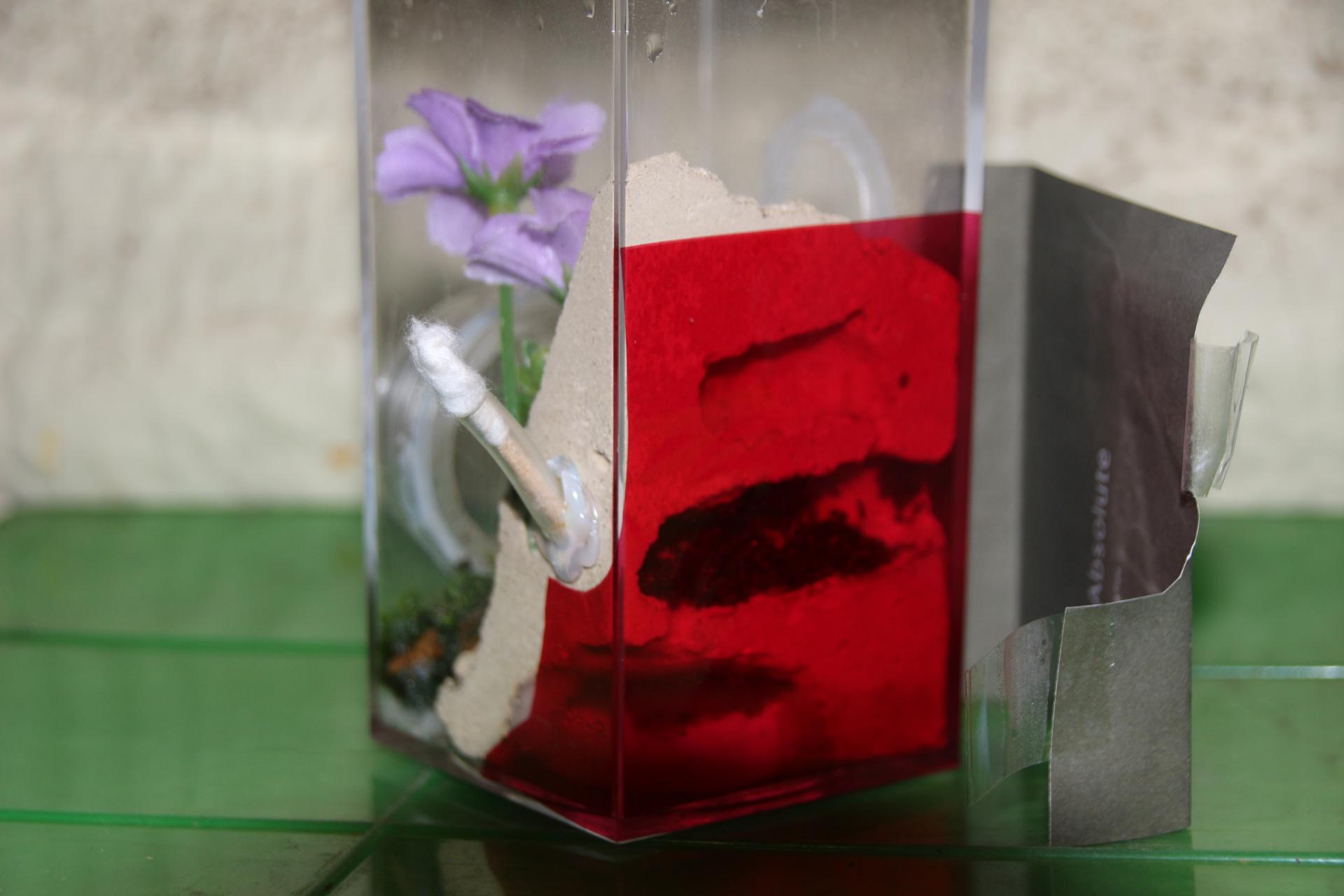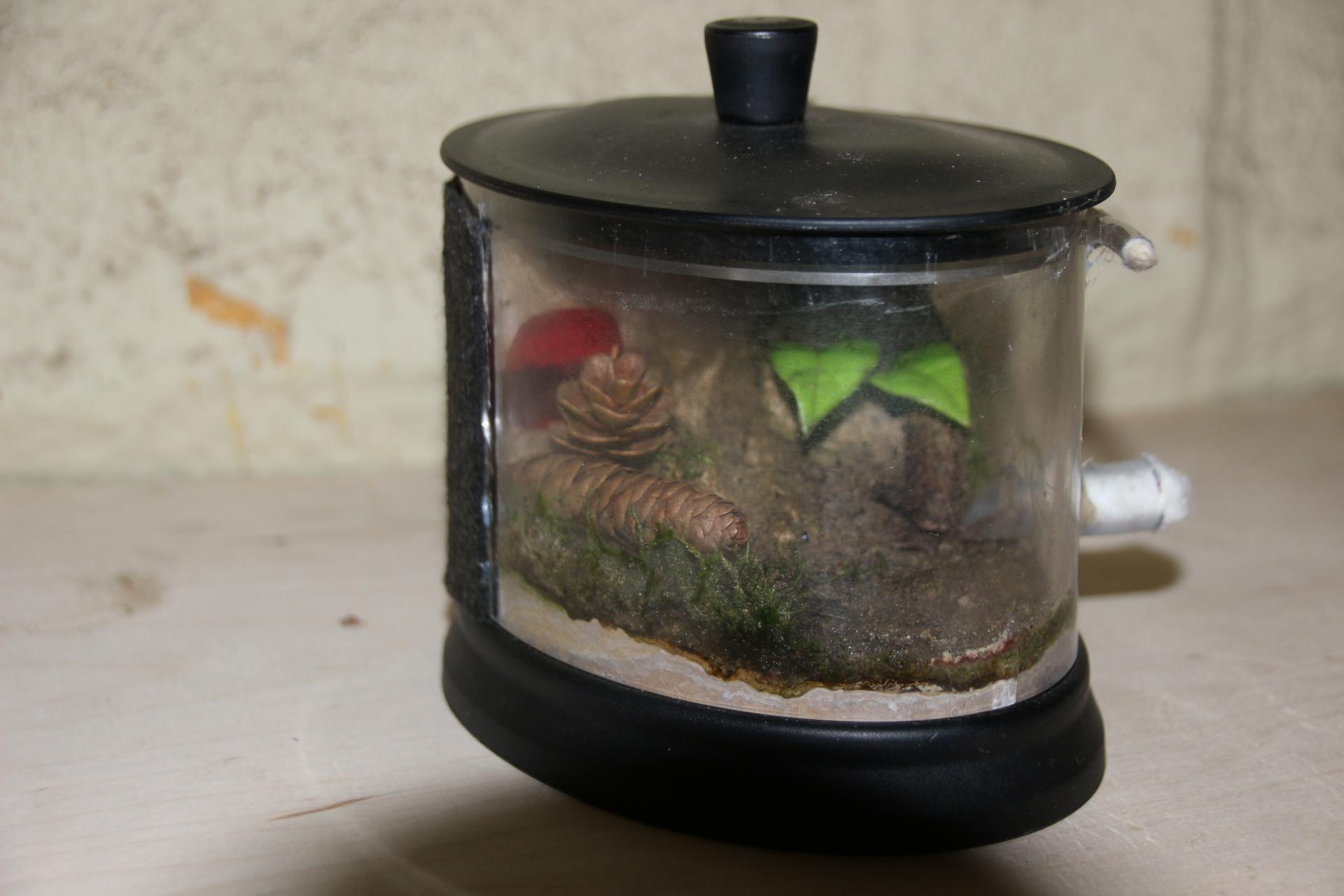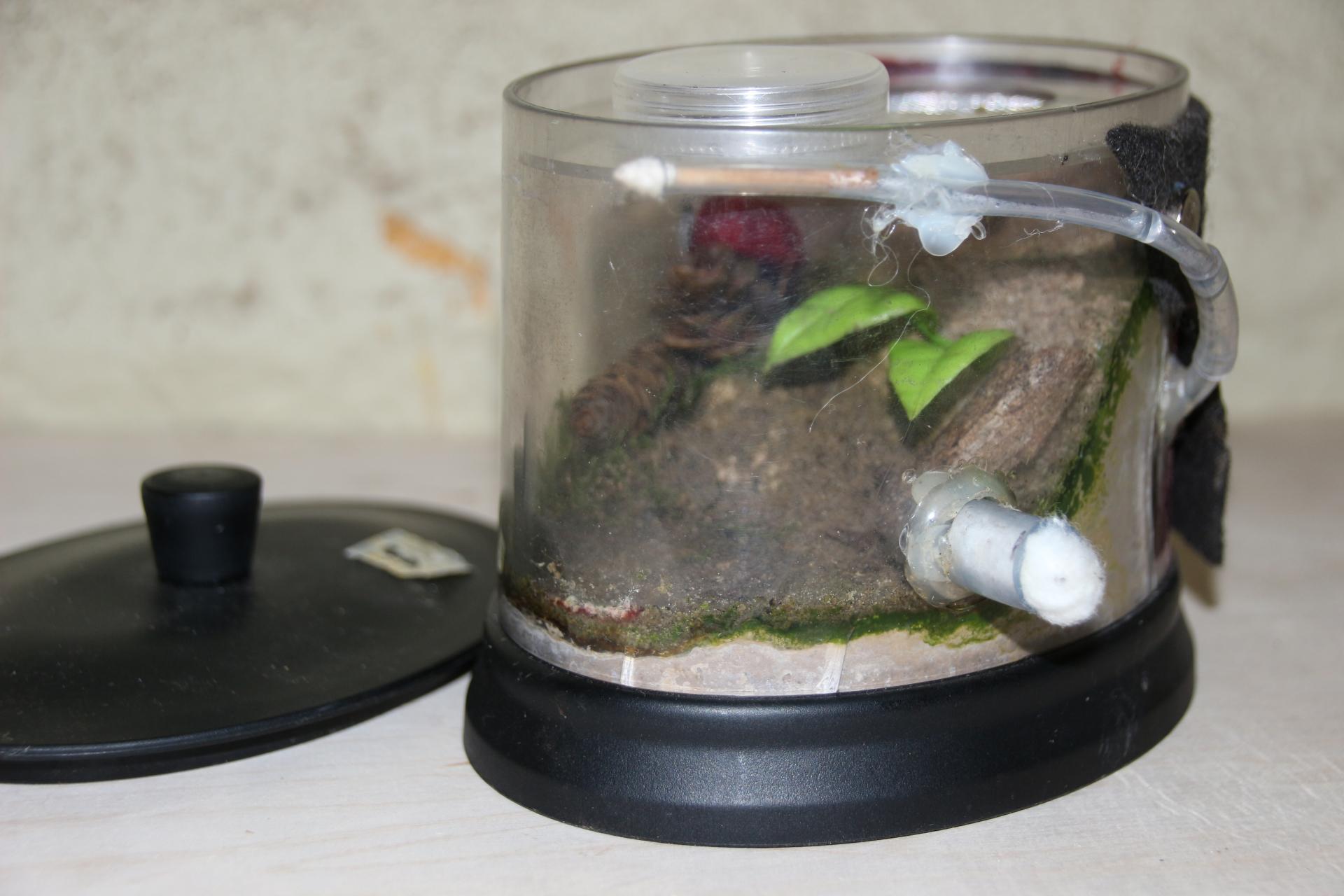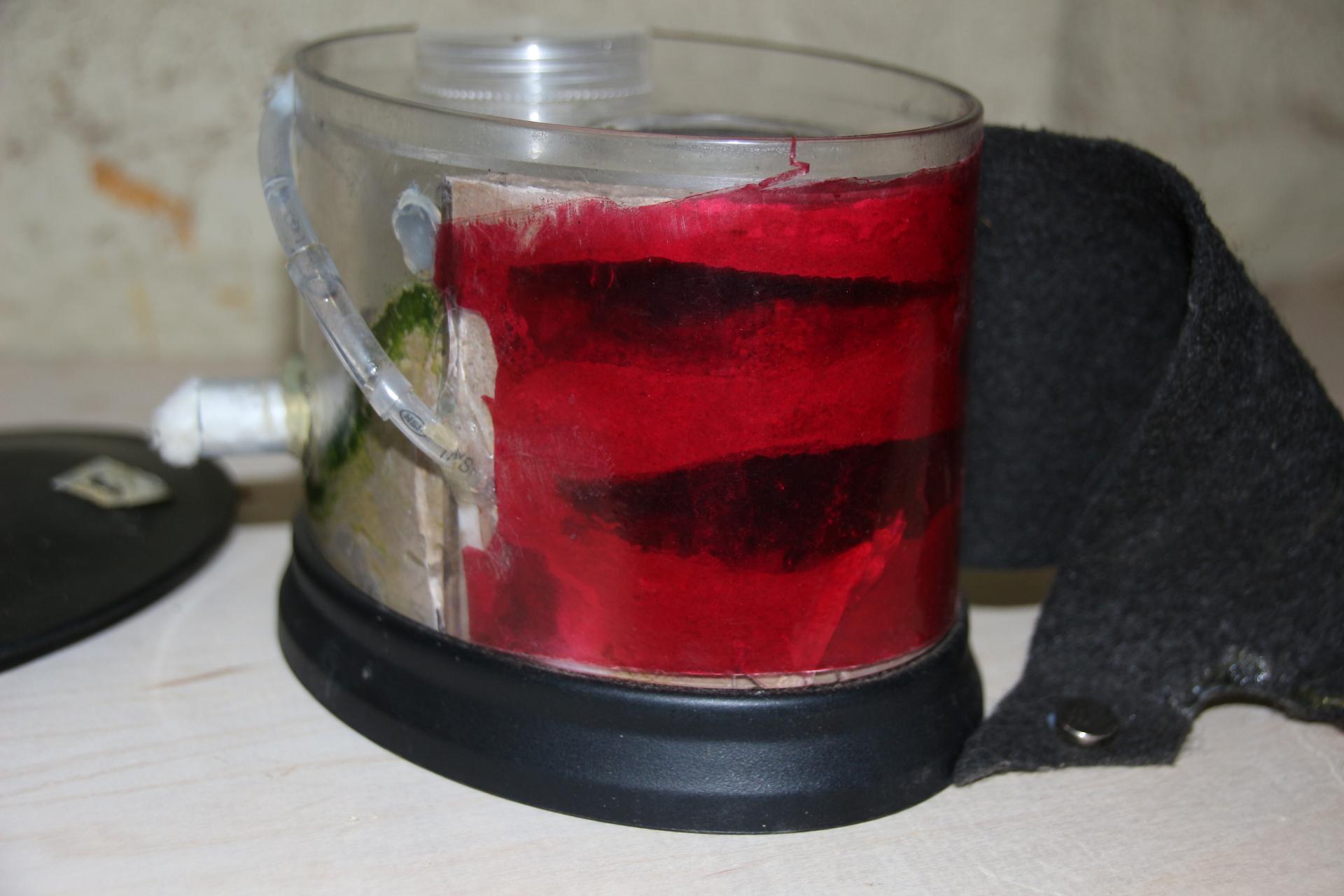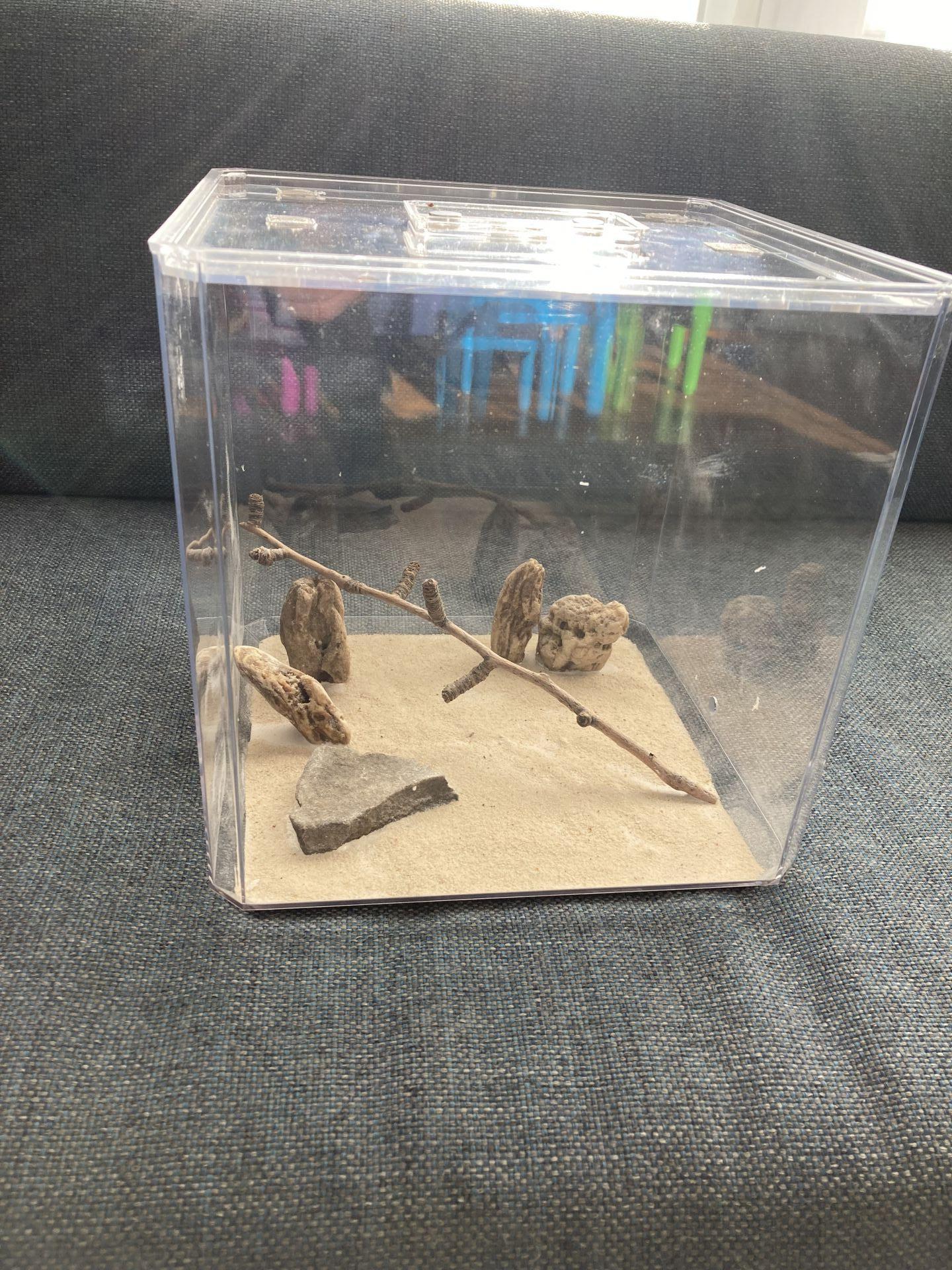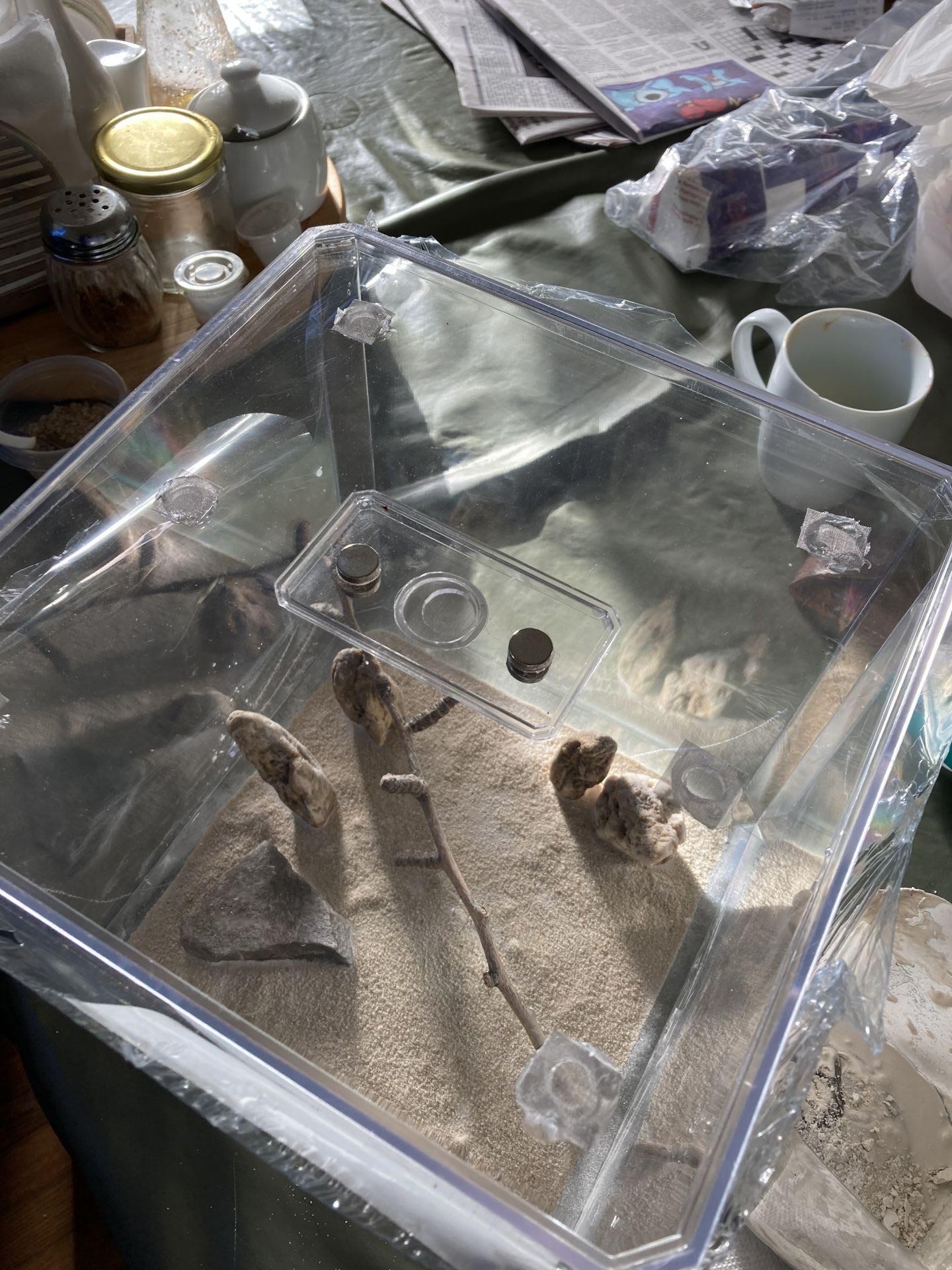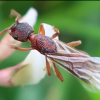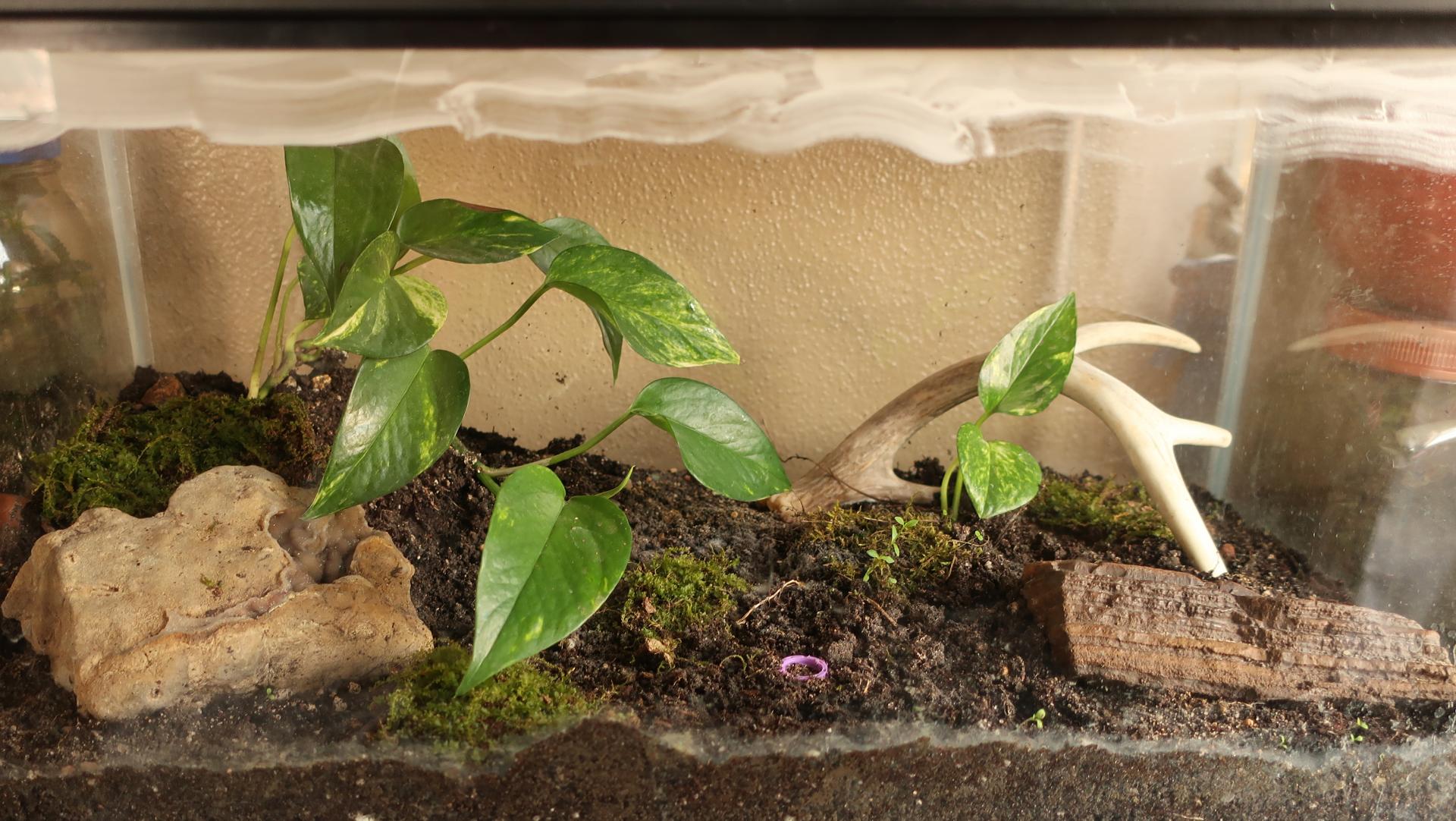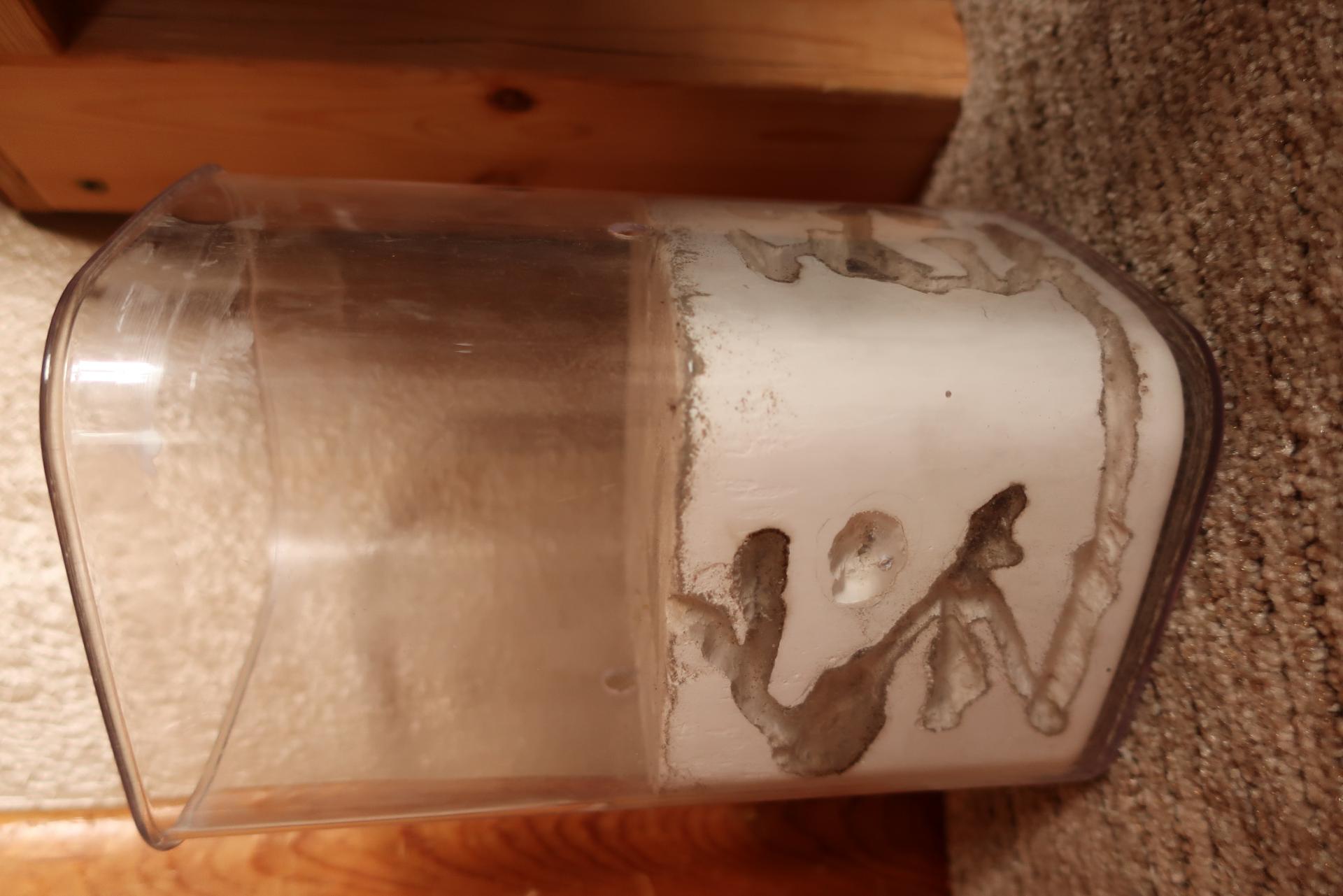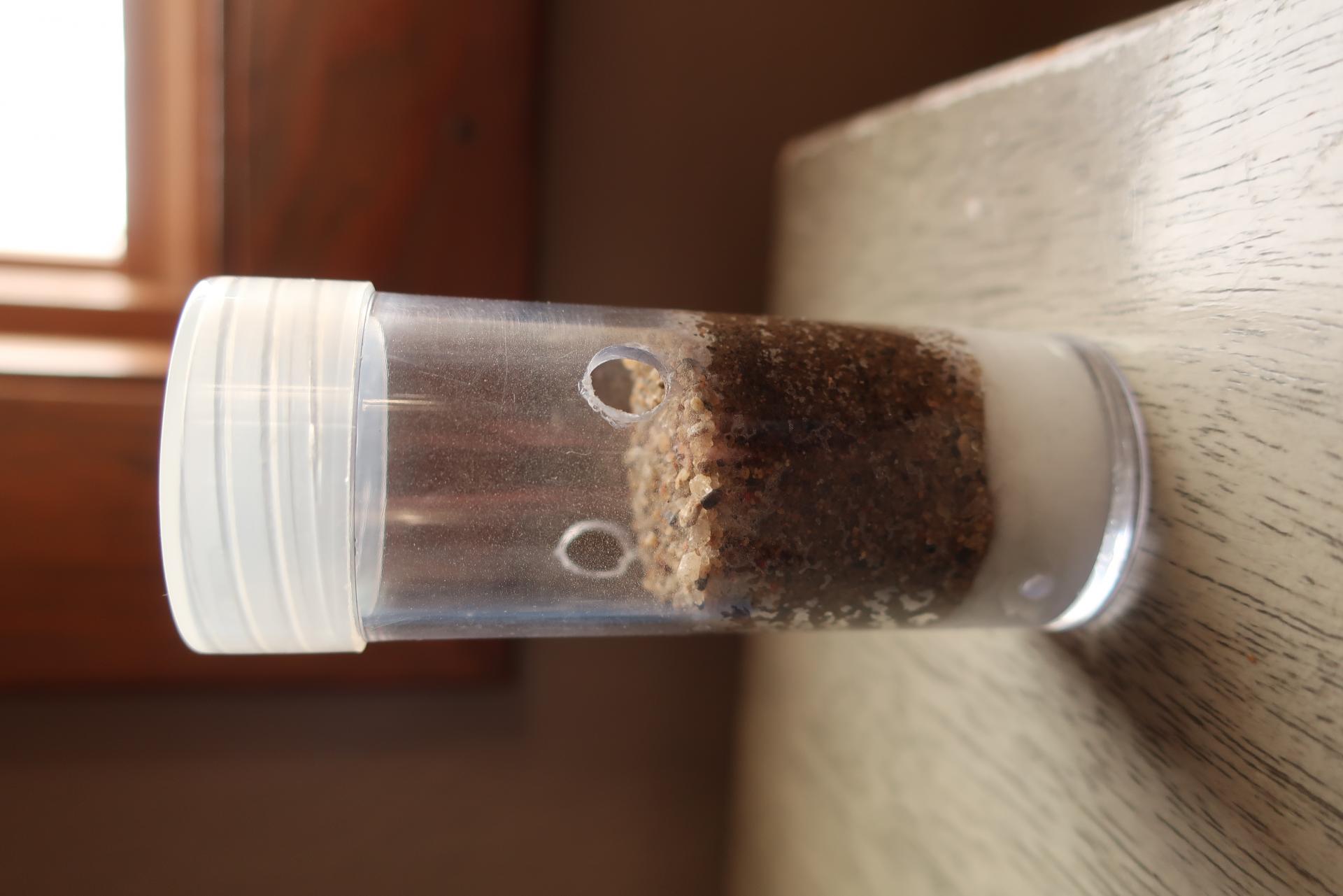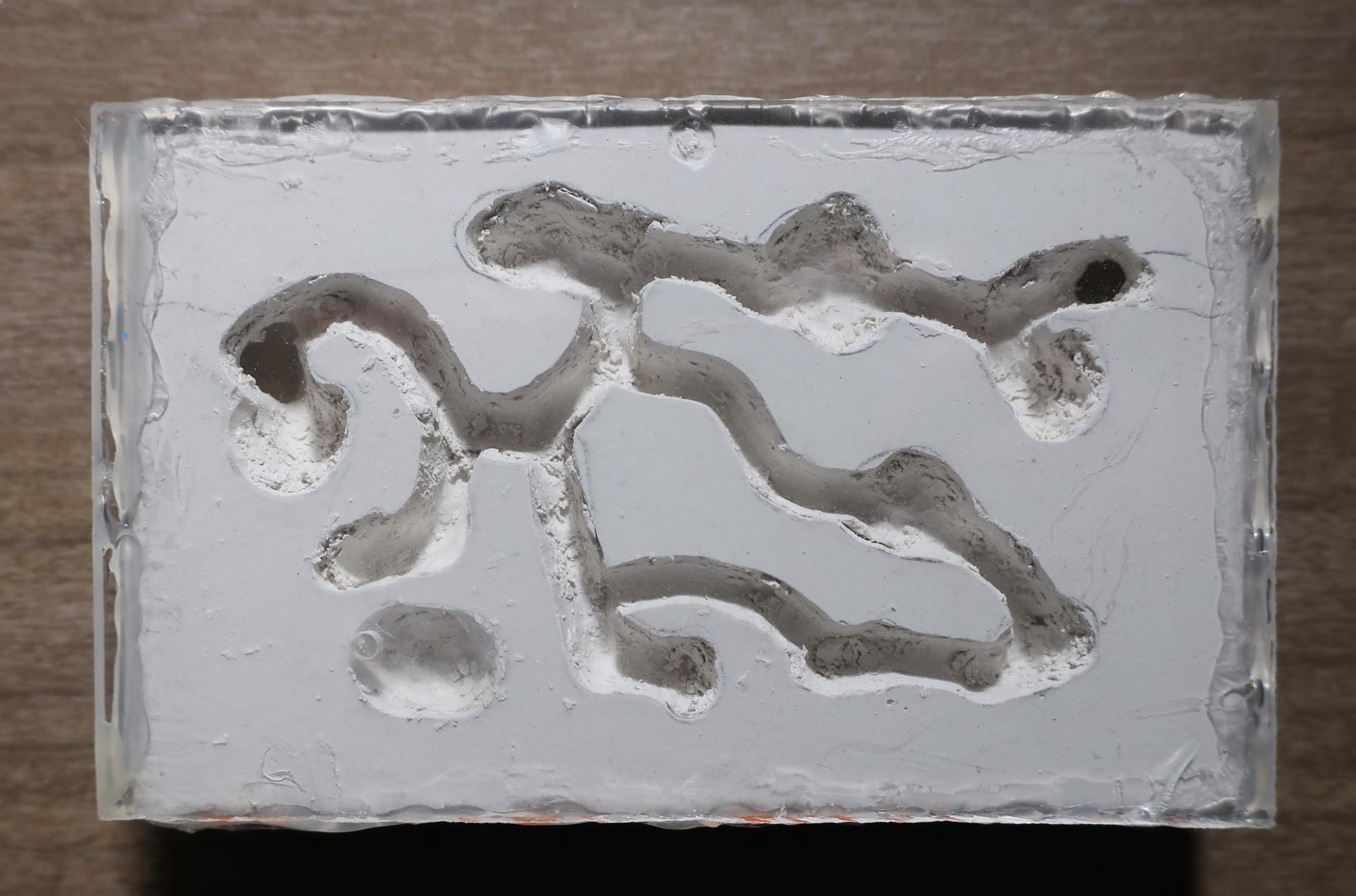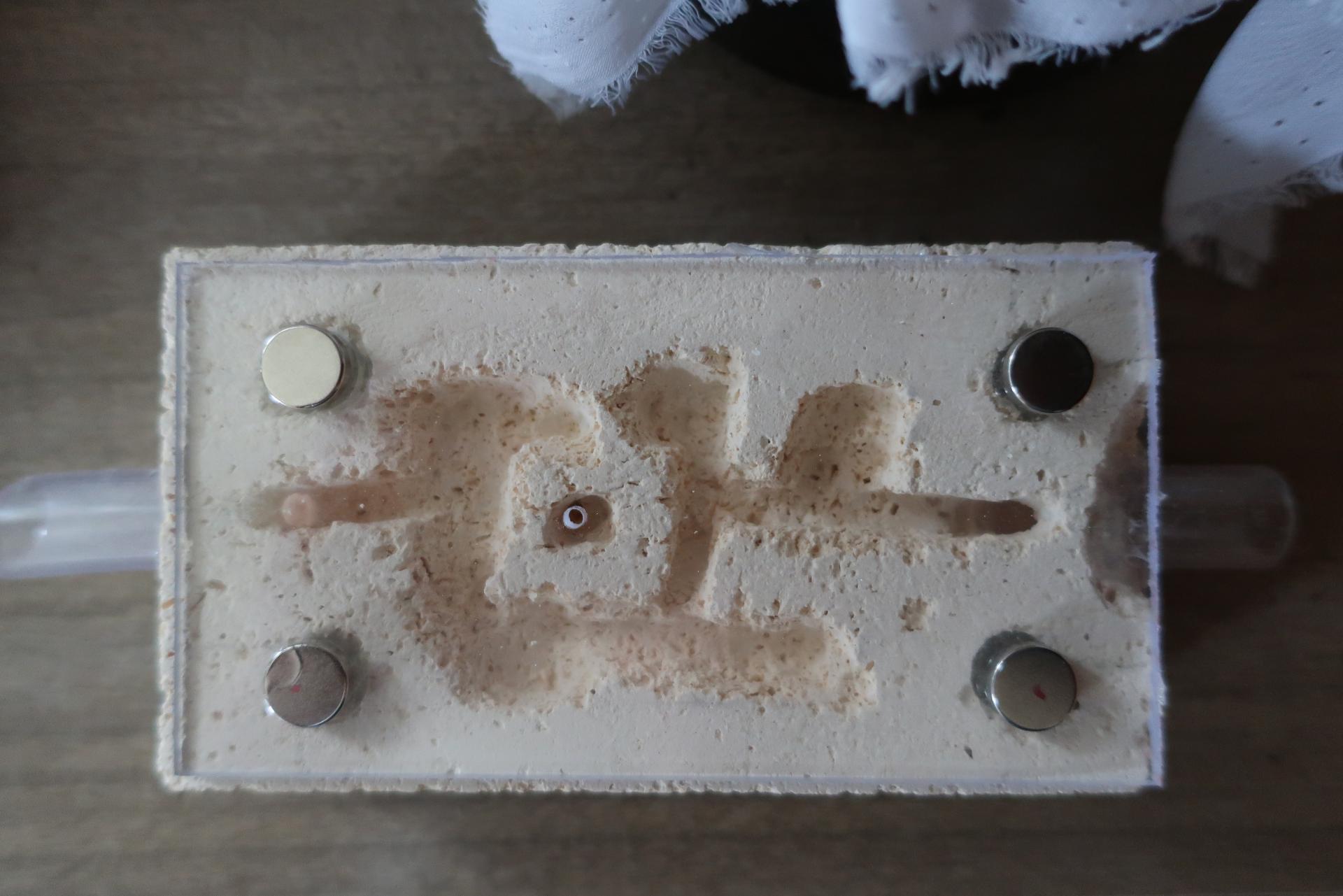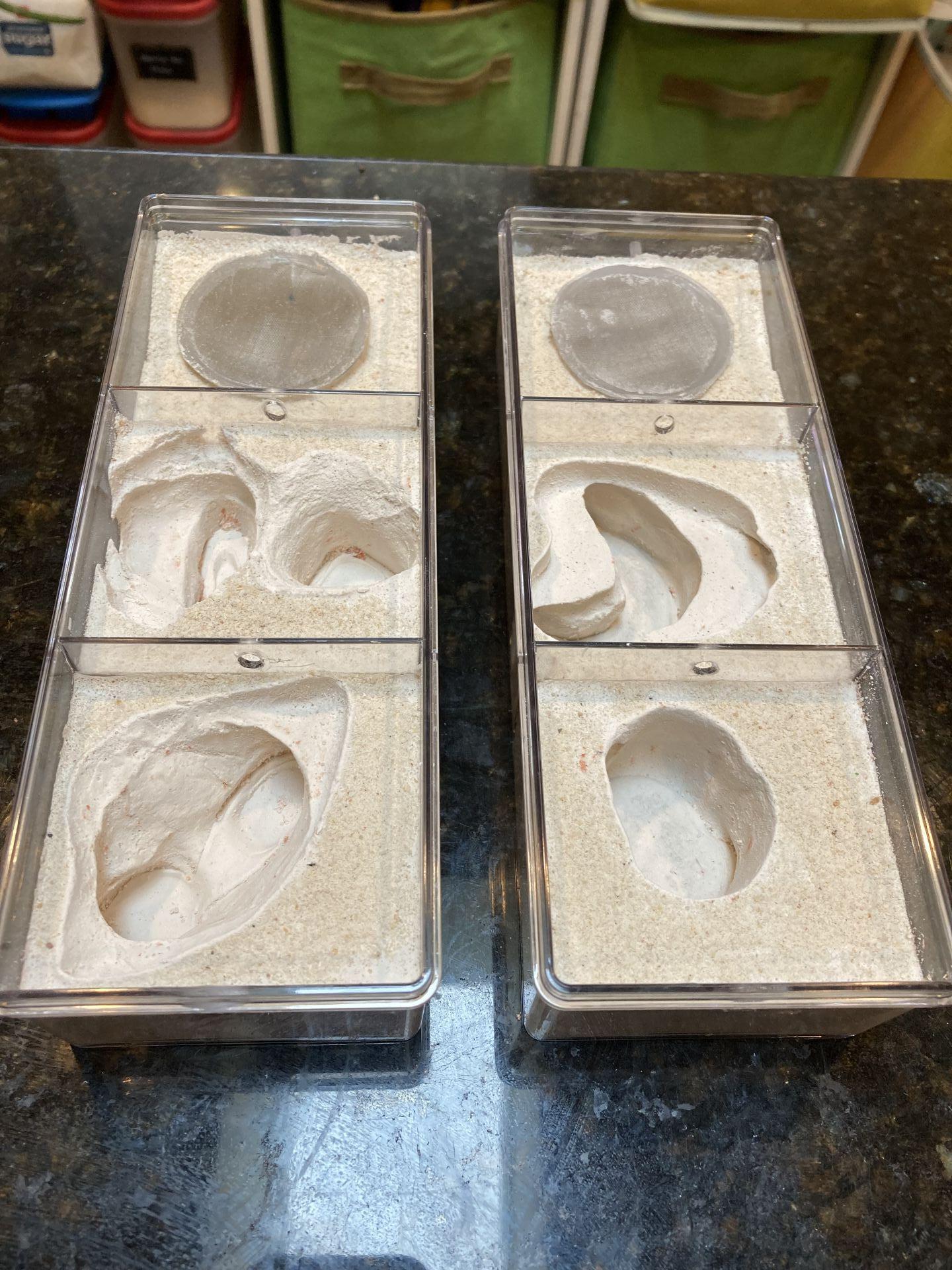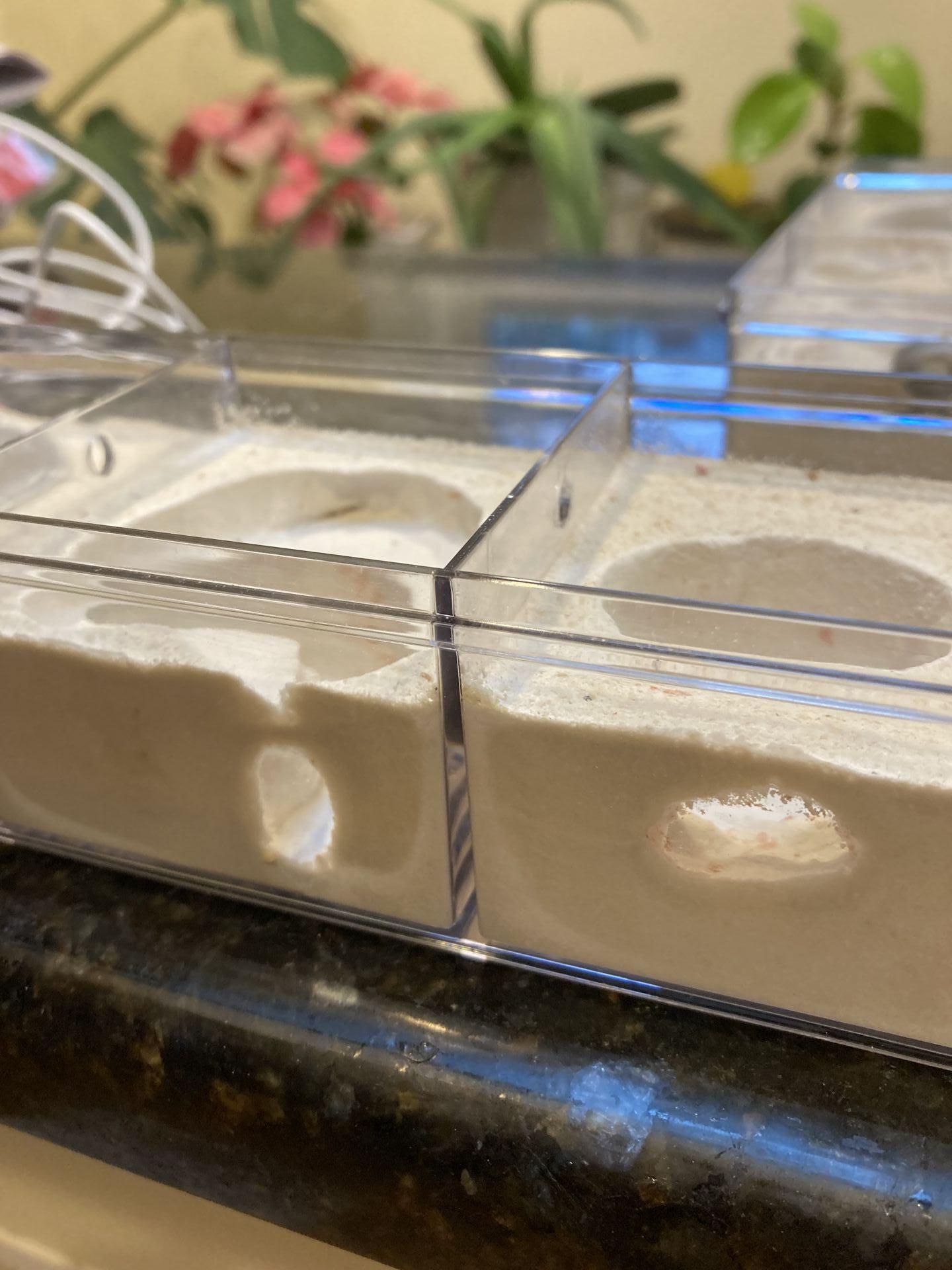Formicarium for a Small Colony
I designed this formicarium for a small Lasius brevicornis colony that consists of the queen and about 15 workers plus some larvae. I wanted to move them from their test tube into a small formicarium for hibernation because of questionable water in their tube. A young colony like this doesn't need a huge nest or outworld, but they do need to feel secure and have ready access to food and water. I chose a small acrylic container (21/4 x 21/4 x 3 in or 5.5 x 5.5 x 7.5 cm) with straight sides and a snug lid that I can remove with one hand for easy feeding. It's the one in the middle. One of the advantages of making your own formicaria is that you can tailor the design to the type of ants and the size of the colony you are going to install. These details should be considered well in advance of the build and drawing up a plan beforehand will help you to evaluate the layout and draw a final design for your build. Make your mistakes on paper.
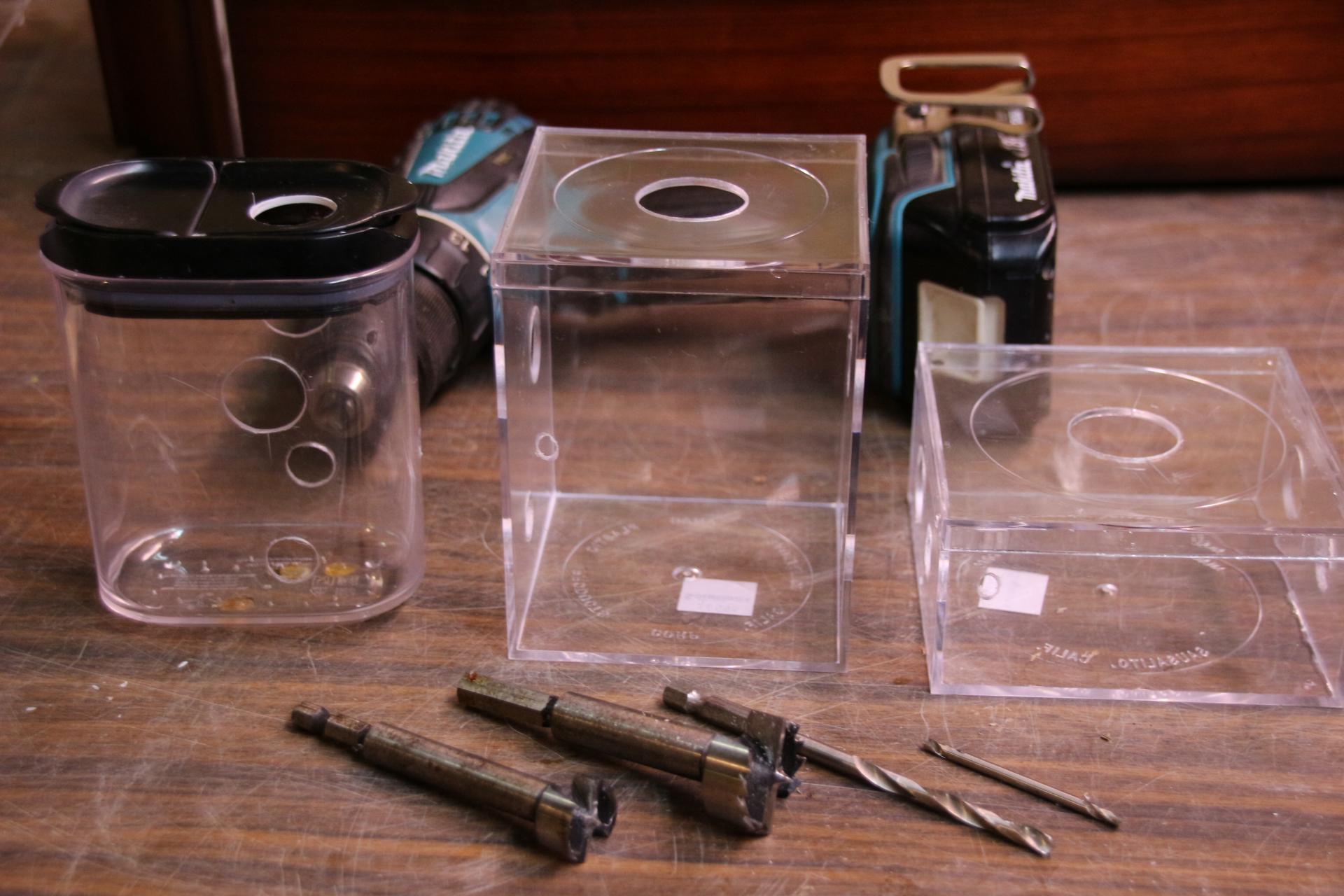
The first step in the construction process is to drill all of the holes for ventilation, water fill tube, and access tubes for later additions. I used the Forstner bits and the drill that you see in the picture. Drill a small pilot hole to rest the point of the Forstner bit into and whirl away. I usually also drill a larger hole in bigger setups for a feeding port. For smaller holes I use a brad point bit. I braced the plastic with a piece of wood from behind and drilled slowly. Once the piece was removed, I smoothed the rough edges with sandpaper
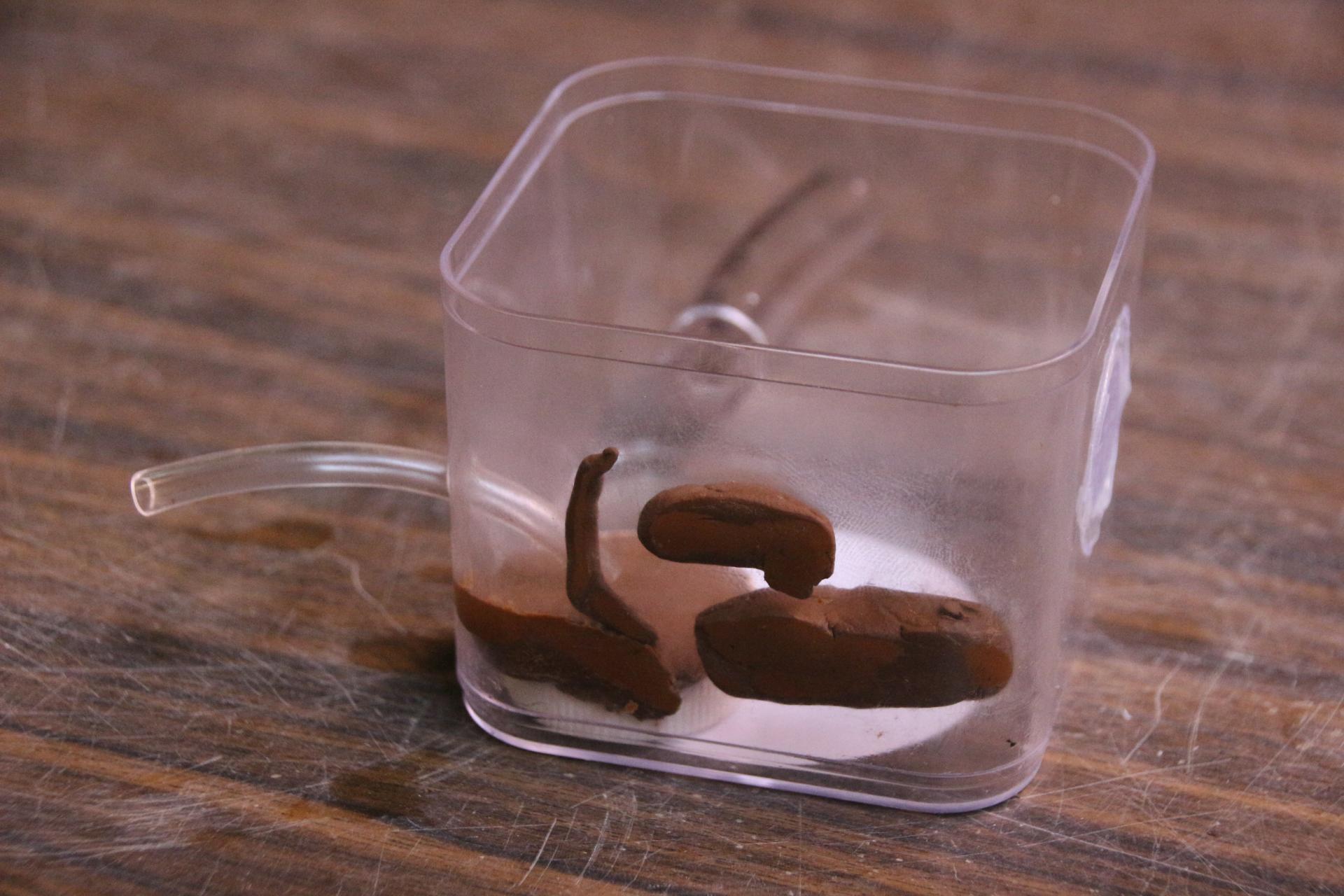
The water tower that I made is a bottle cap with a notch cut in the side for overflow. I position this overflow in the corner or at the side so I can see it while I'm filling the water tower. I place a cotton pad on the bottom of the setup to absorb the overflow and act like a drainage layer, soaking up excess water. I use cotton pads that are made for removing makeup, not cotton balls. They are more absorbent and will sit flat on the bottom, so I usually allow enough overflow to moisten it, but not flood it.
Before going any further I had to cover the inside of the container with mineral oil to make it easier to remove the casting later. I used modeling clay (we used to call it plasticine?) to form the chambers and to cover any areas that I didn't want grout to fill, like the water tower, and made sure the clay was secure to the wall. I formed a chamber at the water tower, a larger chamber beside it and a smaller chamber above for the queen if she needs a space of her own. Ultimately this formicarium could become the queen's chamber when the colony gets large enough to require additional nest sections. For now, I wanted to give them large enough chambers to raise brood for a season, but not so big that they rattled around and felt insecure.
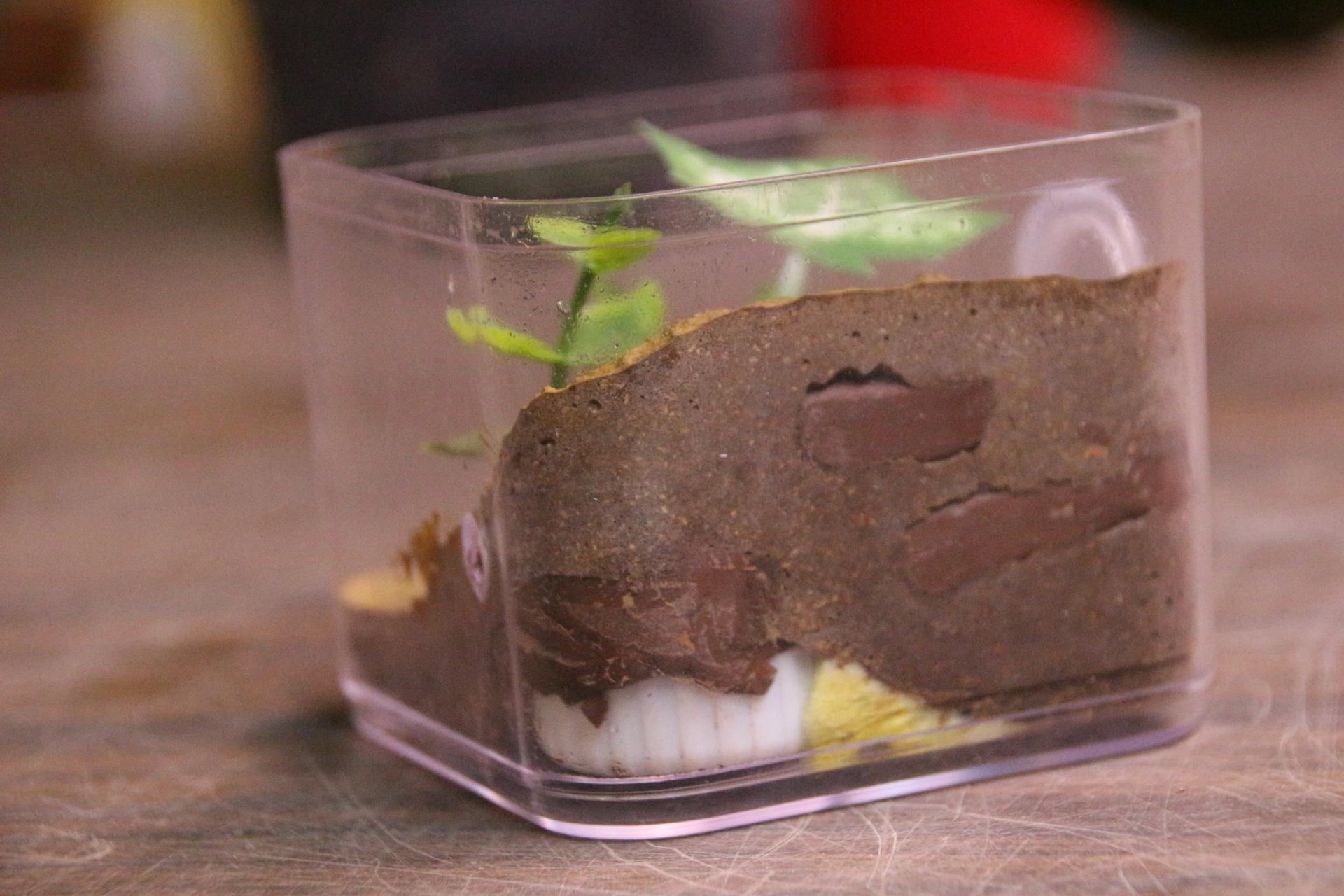
For the grout mixture I used coloured tile grout from the hardware store and horticultural grade vermiculite from the garden center. The vermiculite should be fine grained and not too coarse. The advantage of adding vermiculite to the mix is that it holds water and can wick water up into the grout from the cotton pad on the bottom. Ants that like high humidity will benefit greatly from this.
I mixed the grout with enough water to make a slurry the consistency of pancake batter, and then I added enough vermiculite to make a thick mixture, like oatmeal porridge. I strive for equal amounts by volume of grout and vermiculite in the mix. Sometimes extra water is required as the vermiculite will absorb water from the slurry. When it was ready, I spooned it over the clay chambers, making sure to agitate it slightly to fill small spaces around them and continued until I was satisfied with the coverage. I propped the setup on an angle while it set and added a few plastic plants to the front. I also formed a flat area in the front for a feeding dish.
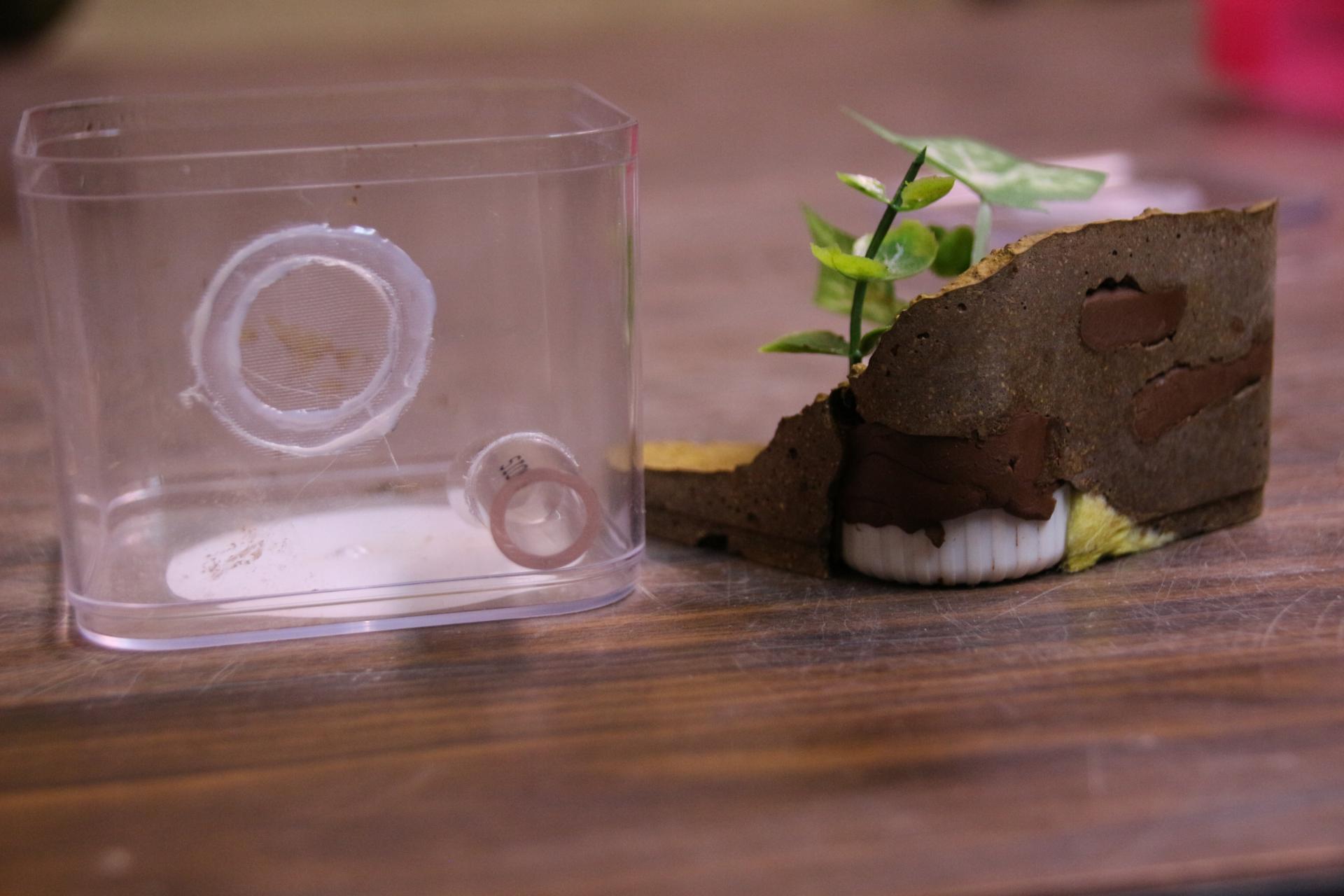
I let the grout cure for a couple of days as it is softer with the addition of the vermiculite and can break while being handled unless well cured. The next step is when you'll be glad you remembered to oil the container, because the whole thing should just slide out of the container, I said should. I find that holding onto a plastic plant and patiently working it loose will usually let me slide the whole issue out. Of course, it helps if you've chosen a container with straight sides. Once I got it out, I removed all the clay and used a grinding bit to shape the chambers and construct the tunnels. Then I made the water tower. I filled the bottle cap with cotton pad and hot glued mosquito screen on top with a cut for the fill tube to go in. Then, I hot glued the whole thing to the bottom of the grout nest, making sure that it fit back into the container. I washed the oil from the container before I slid the grout casting into place. A couple of spots of hot glue holds it there. There can be considerable variation in an individual container, so I put it back in exactly the same position in which it was cast. I had already drilled a pilot hole through the acrylic for the water fill tube, so I followed the same line, drilled through the grout to the water tower and installed and hot glued the fill tube in place.
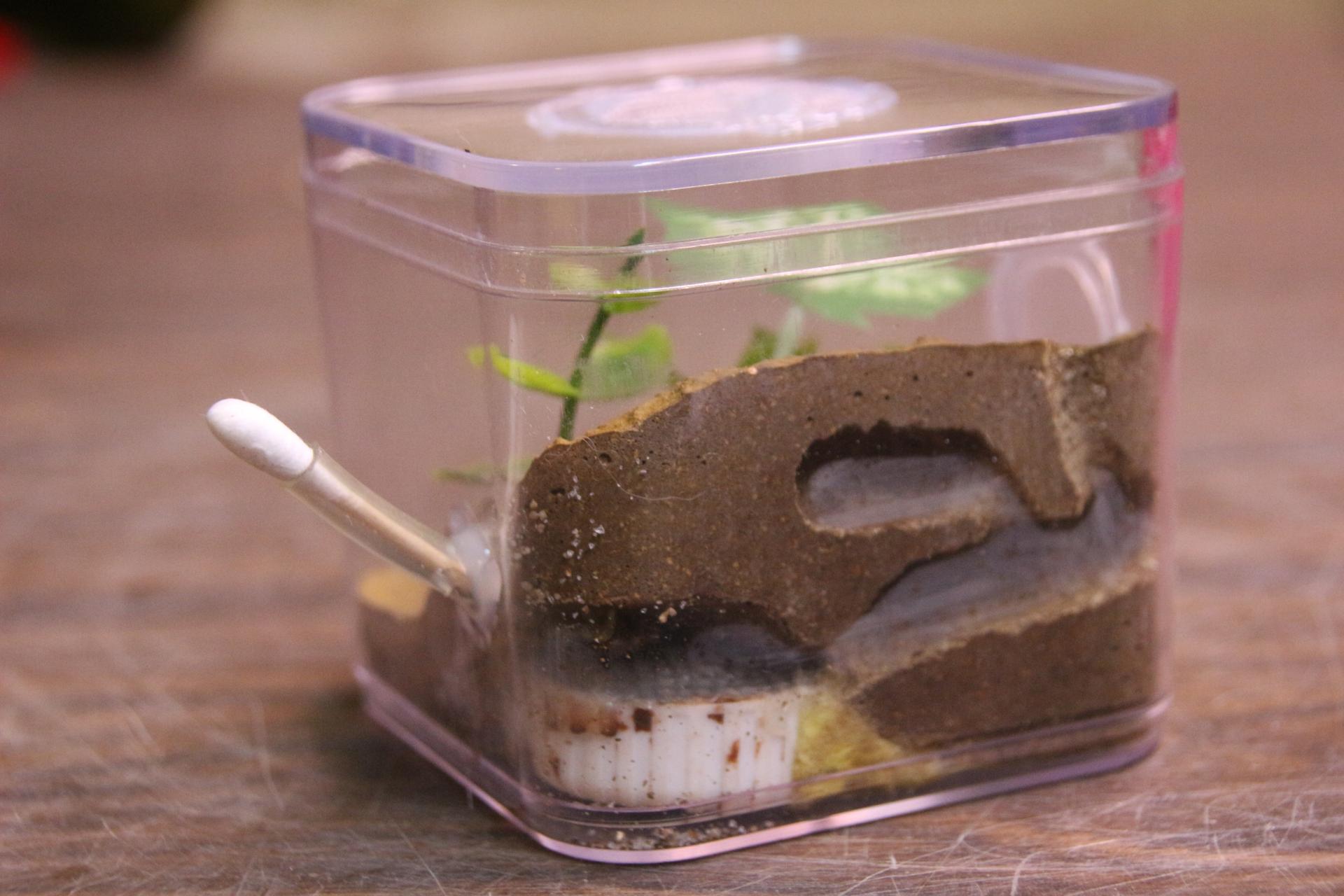
Now I finished up all the details like gluing tubes for future access and screens for ventilation. I used a fine mesh screen for these small ants, but I consider screens a last resort to prevent escapes. I put mineral oil around all my screens and around the top rim of the formicarium as it provides excellent escape prevention for most of my colonies.
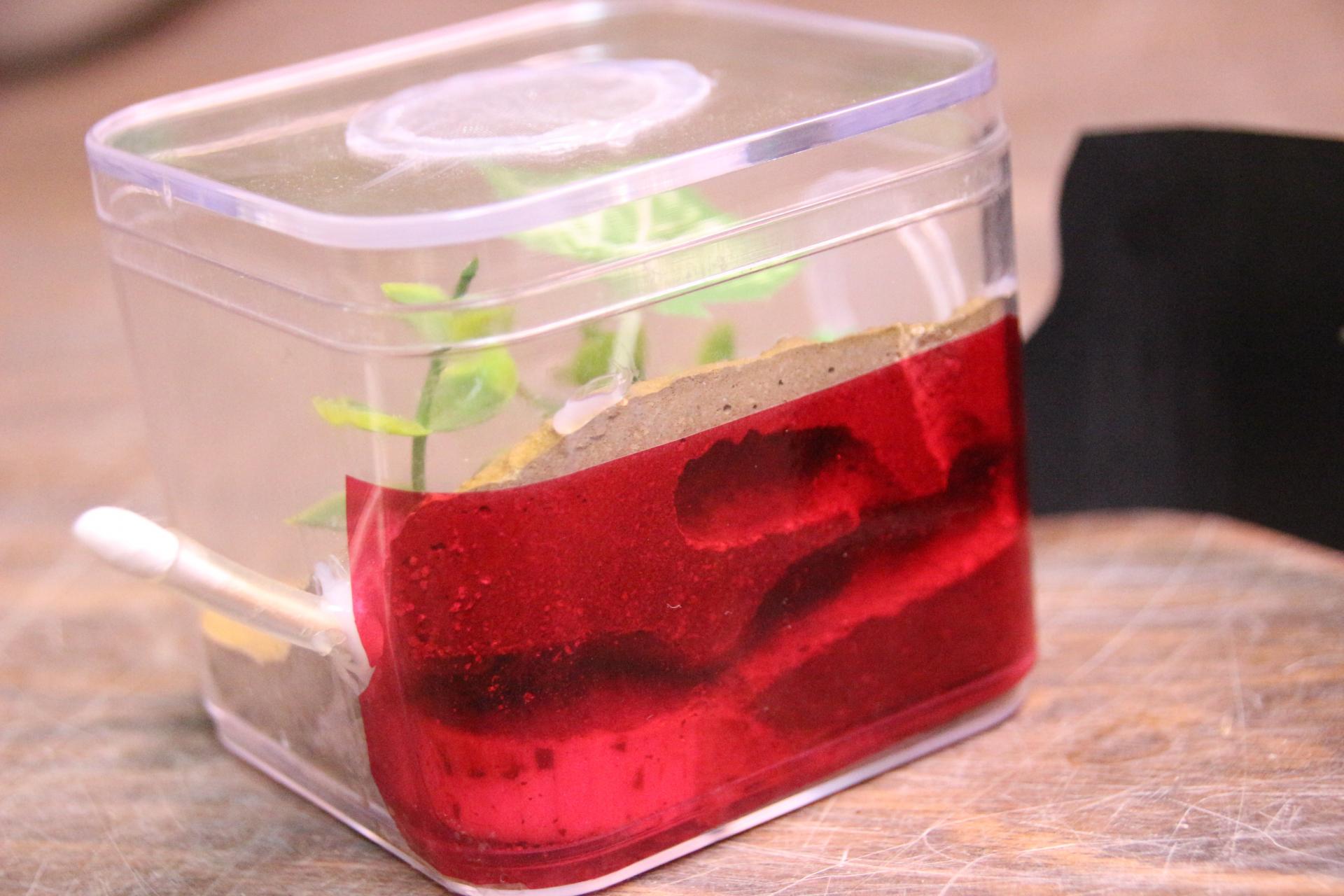
The final things I added to the back were the red cellophane filter and the blackout cover. I used a cotton swab as a stopper for the fill tube.
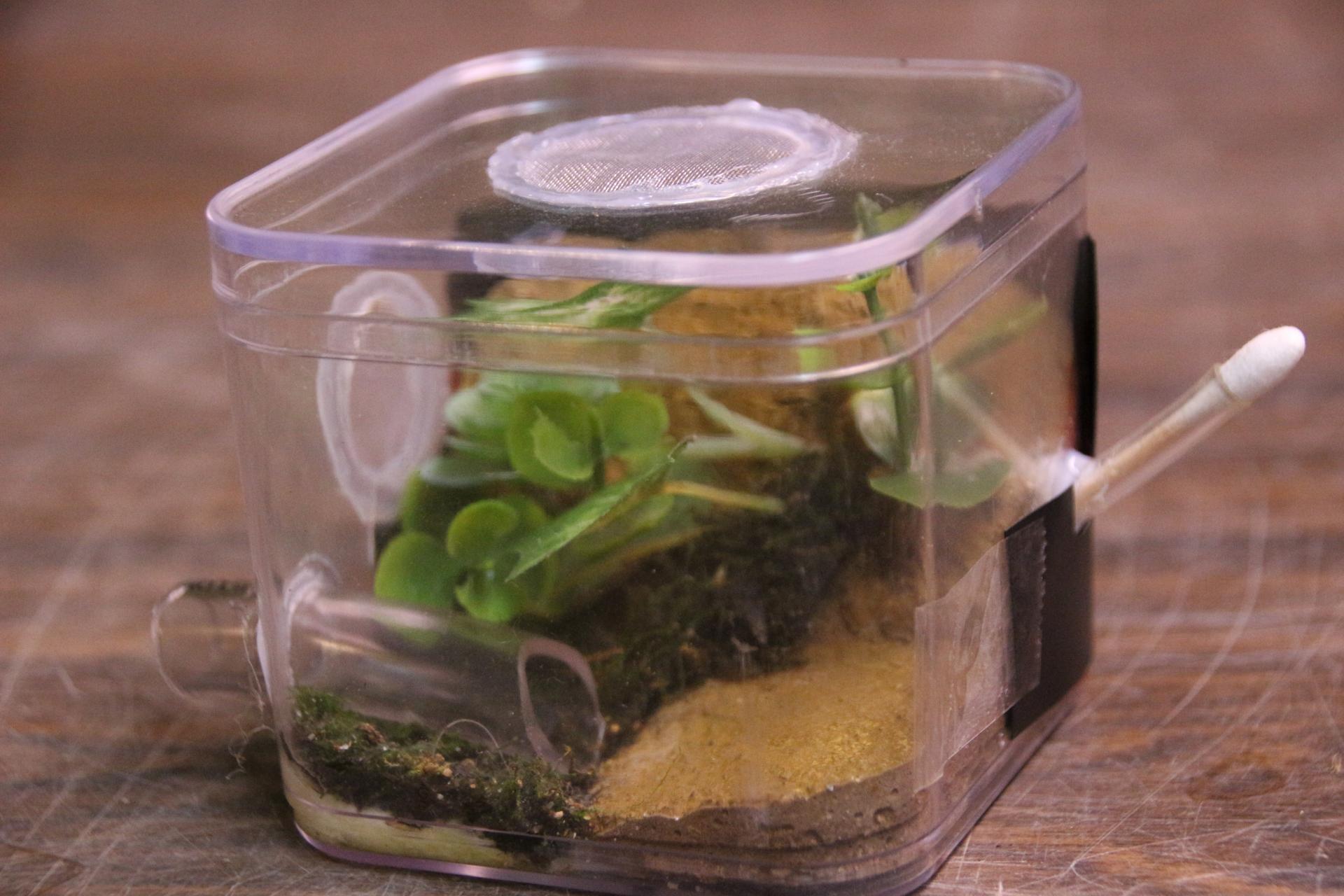
I finished off by putting some moss in the front corner. It'll be watered by the cotton underneath that has soaked up the overflow from the water tower. I always like to have a wet hole in a corner of all of my formicaria to provide humidity and water for any desperate ant. However, It's very tempting for a young queen, newly placed in a formicarium, to make a dash for the moss and not the entry hole to the formicarium, so, this time I waited until I had them comfortably installed before I added the moss.
After about a week the colony was settled in quite nicely, they even found a way to squeeze their way through from the water tower to the front, right to the feeding dish. Perfect. Now they've made it a tunnel and they're quite comfortable, so I put them into their winter quarters, and we can hardly wait for spring.
Try your hand at making a formicarium for a colony of your own. Part of the satisfaction of ant keeping for me is to watch as a young colony thrives and grows in a formicarium I've made for them that satisfies their needs and mine.
My father always said I had ants in my pants.



